Excerpts from Jim Conrad's
Naturalist Newsletter
from the September 22, 2008 Newsletter issued from Sabacché, Yucatán, MÉXICO
GOLDEN-SHOWER TREE FLOWERING
In the September 8th Newsletter I told you about the Lebbeck-Tree prettily flowering next to the village's plaza. As the Lebbeck-Tree fades another species is coming online, putting on even more of a show. It's the Golden Shower Tree, traditionally named CASSIA FISTULA but now probably sunk into the genus Senna. The twenty-ft-tall Golden Shower Tree's glory lies in its two-inch-wide, canary-yellow blossoms densely clustered in foot-long racemes, and its handsome, foot-long, dangling, pinnate leaves, as shown below:
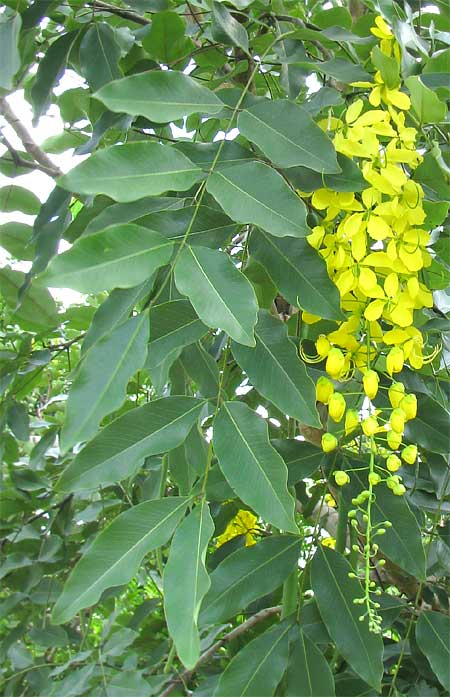
Below you see a close-up of a flower's sexual parts. The long, slender, green, U-shaped item is the ovary -- the future legume. The other things sprouting from the blossom's center are male stamens consisting of curving, stalk-like filaments holding out baglike anthers, which open to release powdery pollen.
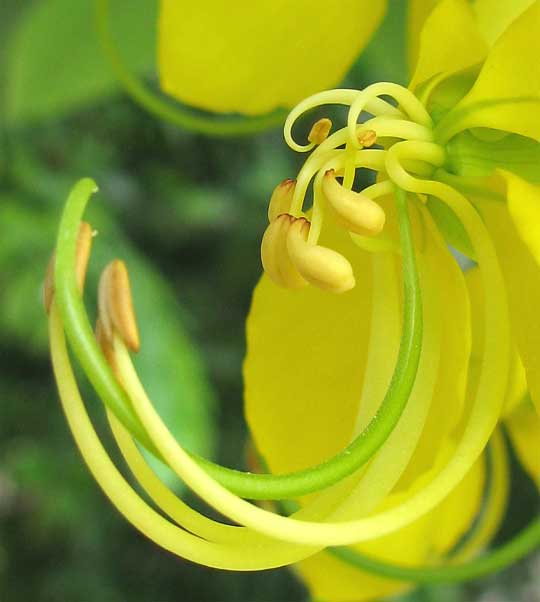
Stamens in this genus are different from those of most other genera in that in a single blossom they grow in very different sizes and configurations, as the picture shows. In certain closely related species some stamens are sterile, having lost their pollen- producing anthers so that now the headless filaments serve mainly as handles for visiting pollinators. Senna fistula's flowers bear ten fertile stamens, but of different sizes.
The Golden Shower Tree's fruits are attention-getting, too. They're two feet long, very slender and roundish in cross-section, like enormous string-beans, as shown below:
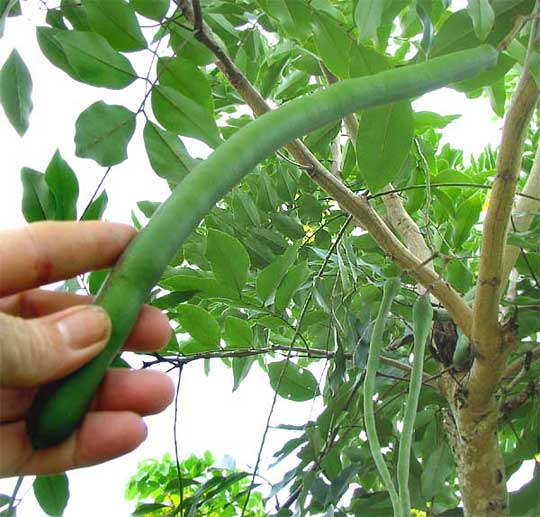
This is one instance when the outside world knows about the medicinal value of a plant growing here but the Maya don't. For, Golden Shower Trees are alien here, being from India. So far the Maya don't seem to know that the pod produces between its many seeds a pulp that makes an excellent laxative. In the old days when pharmacists compounded drugs from raw ingredients "Cassia pods" from this tree were a mainstay. When mature, the pods turn black.
from the March 14, 2010 Newsletter issued from Hacienda Chichen Resort beside Chichén Itzá Ruins, central Yucatán, MÉXICO; limestone bedrock, elevation ~39m (~128ft), ~N20.676°, ~W88.569°
GOLDEN-SHOWER TREES FRUITING
Now deep in the dry season the tree's fruits are maturing and dropping off. You can see them on a tree below:
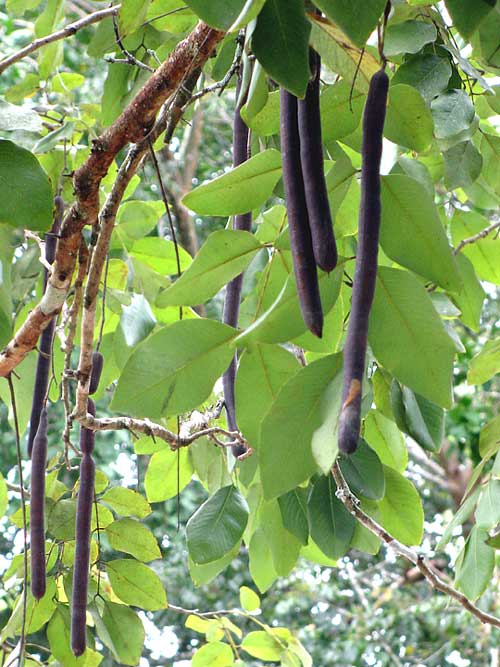
The ripe fruits -- which are bean pods because the trees belong to the Bean Family -- are of special interest because they constitute an important part of the traditional pharmacopia, or body of information pertaining to medicinal plants, of many cultures. If you list all the pods' uses you end up with such a list that you wonder if any cures work at all.
One use, however, occurs so regularly in so many diverse cultures -- even our own back when our pharmacists compounded their drugs from natural products -- that there must be something to it: The uncooked pulp of the pods cures constipation. A cracked-open pod showing greenish pulp between seeds is shown below:
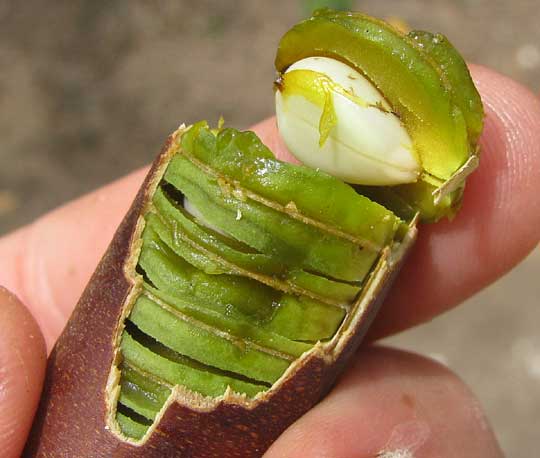
The pulp tastes and smells a little like the "honey" in Honeylocust pods up North, so it's not bad at all. I read that the green pulp shown above is used as a laxative, but when the pods are collected for distribution as medicine dried-out pods are selected and in them the pulp will have drastically shrunk, hardened and turned black. I'm assuming that the dried pulp, which would weigh much less than the green pulp, is being referred to when it's written that to prepare a laxative you should combine four to seven grams of pulp with an equal quantity of sugar or tamarind. Four grams is a very small amount, about 0.14 ounces, or 0.009 pound.